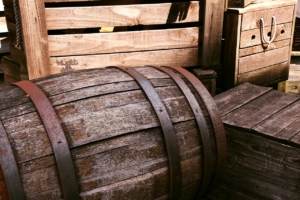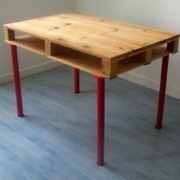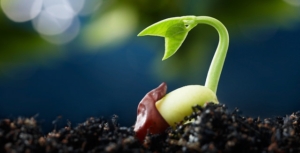BestInAU Praises Benefits of Wood Packaging
BestInAU Praises Benefits of Wood Packaging
The ‘BestInAU’ website routinely scours the Internet to find the best deals, the best articles, and the most useful information for its Australian audience, and recently it carried an article in praise of wooden containers for storage, packaging, and delivery. Information in that article has relevance to people all around the globe, since the benefits of wood packaging are applicable to virtually everyone in every location of the world. Here are some of the most important reasons that wood is considered to be such a versatile and effective container for packaging and containing goods.
Durability
Wooden crates are perfect for moving a large quantity of goods, since they retain their shape and their integrity of structure even under pressure from within and from without. This can be essential for businesses wishing to keep their goods safe during transportation, and during storage time. When compared to materials such as cardboard, it’s easy to see the durability advantage offered by wood packaging.
Affordability
Wooden crates are very affordable when brand-new, but they are even more affordable when purchased second-hand and reused. While other materials may be initially cheaper, the fact of wood’s re-usability makes it a better bargain and a more cost-effective choice for storing and packaging.
Re-usability
Speaking of being reusable, the fact that they are so well constructed makes wooden crates highly reusable, almost literally until they fall apart. When your wooden crates do begin to show signs of wear and tear, they can be deconstructed and rebuilt into brand-new wooden crates.
Non-corrosive
When packaging with wooden crates, you don’t have to worry about corrosion, because wood provides a very effective barrier against dirt, dust, moisture, and many other kinds of debris which might degrade your products in some other container.
Stackable
When space is at a premium, it’s very helpful to be able to stack your wooden crates vertically, so as to save floor space and warehouse space. This also makes them highly transportable, and can make it more cost-efficient to send stacks of wooden crates holding your goods.
Versatility
When you’re done using your wooden crates for packaging, they can also be used for a number of other projects as well. They can easily be converted into simple chairs, shelving, or tables for instance, so they can be used all around the home.
Customizable
If you need wooden crates in a special size or shape, it’s fairly easy to find a vendor who can accommodate your wishes. If you anticipate using wooden crates around the household, there are any number of wood-working specialists who are capable of making high-quality wooden creations, according to your specifications.
Eco-friendly
There aren’t too many materials which are more eco-friendly than wood, and it’s a packaging material that excels in being reusable and renewable. Provided you obtain your wooden crates from a maker who uses sustainable sources, you can ensure that your wooden packages are recycled after their period of usage, to complete the cycle of renewability.
Nature’s Packaging is committed to the sustainability and recyclability of the wood packaging industry. Recent studies show that 95% of wood packaging materials are recycled and diverted from landfills. When forests are sustainability managed they sequester carbon from the atmosphere to help fight climate change and the wood packaging industry is doing its part to make sure that no lumber harvested from trees goes to waste.










